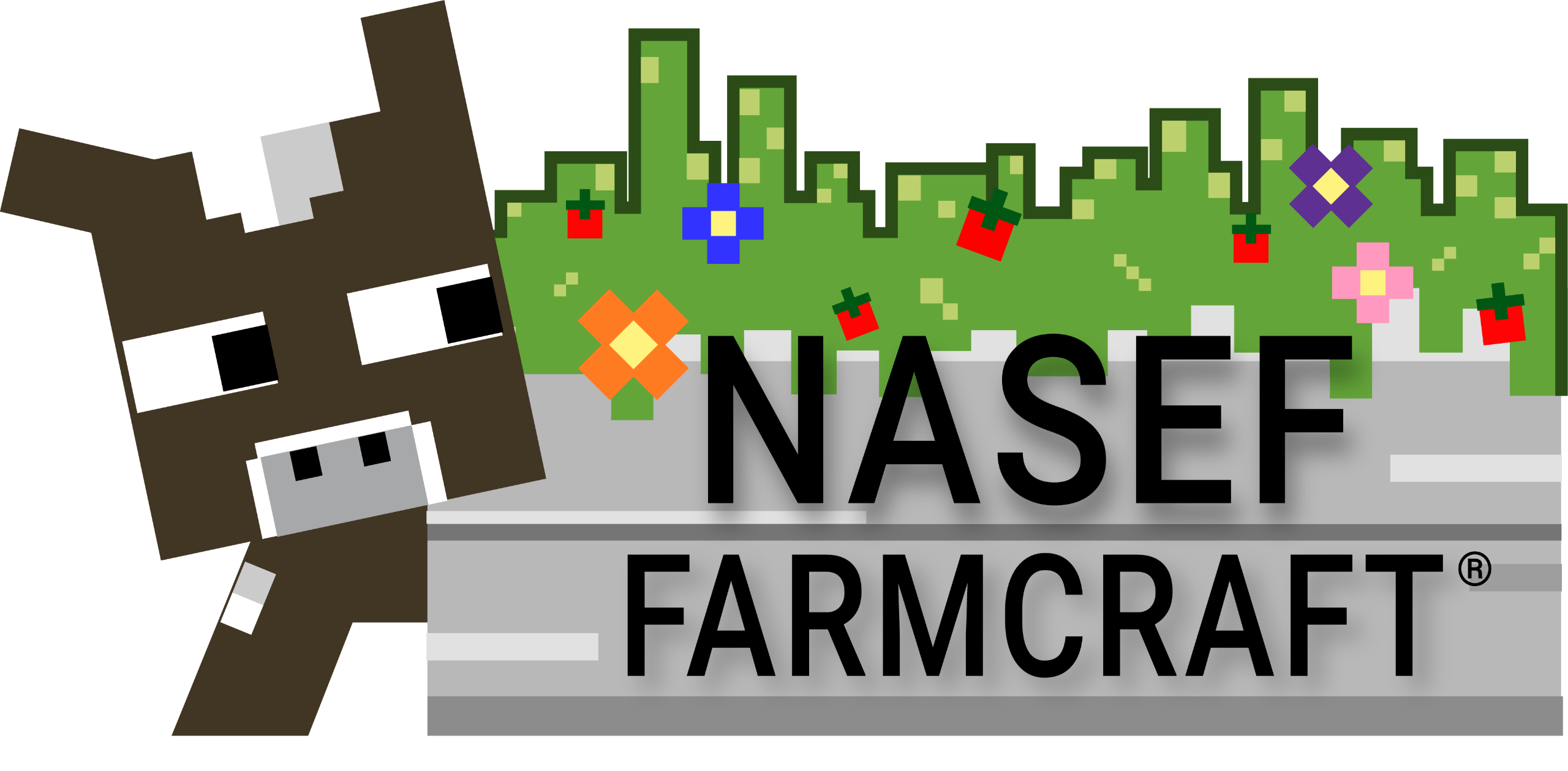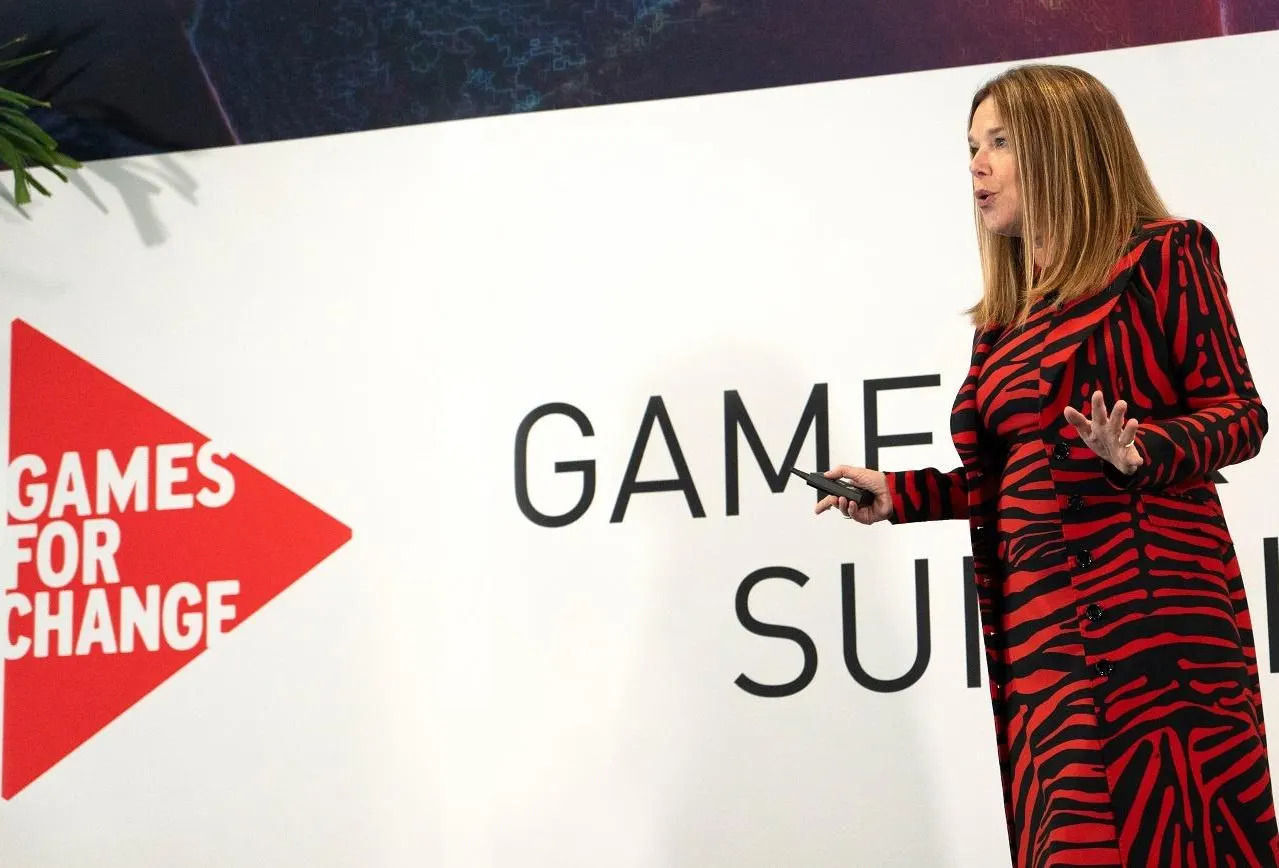Disinformation is the mother of all tricky subjects. How do you counter it in a day and age when anybody can say anything and theoretically gain traction? How do you debunk something millions of people have already seen? And who even decides what constitutes “good information” in the first place? The United States government thinks games can be part of the answer.
In April, the US Department of State began accepting submissions for a $1,000,000 grant to help a nonprofit develop “an evergreen game in a sandbox platform, with an existing fan base, in which participants play a game that builds cognitive resilience to authoritarianism and promotes democratic norms and values.” Around the same time, the Department of State also started offering a $250,000 grant for a nonprofit to spin up a Ukraine-based esports program in which “athletes will receive counter disinformation/conflict resolution training to confront foreign propaganda and disinformation in competitive online gaming spaces.” While the submission period for those two grants ended on May 22, the government continues to offer $800,000 for a “United with Ukraine game jam” with the goal of creating games that will “increase player skepticism of foreign propaganda and disinformation.”
These joined other recent government-backed programs that include research of “the scope and scale of foreign propaganda and disinformation occurring in games and game-adjacent platforms in Eastern Europe” and an experimental learning program in Turkmenistan that, among other things, aims to organize a Network of Academic and Scholastic Esports Federations (NASEF) “Farmcraft” competition for students ages 10-18. This program “uses the popular game Minecraft to introduce the basics of agricultural science, food security and climate change.”

These programs largely focus on Eastern Europe and especially Ukraine due to Russia’s ongoing invasion of the country, which the United States has spent over $100 billion in aid and military assistance to counter.
“Since Russia’s full-scale invasion of Ukraine, so much of the country has been mined and menaced that it is not always safe for children to play outside. For the time being, the future of play in Ukraine will largely be indoors. One popular avenue for safe, indoor play is video games,” a State Department official told Aftermath. “The ability to communicate in games and game-adjacent spaces is an important vector for engaging with hard-to-reach audiences targeted by disinformation narratives, especially Russian youth, to advance our efforts to counter Russian disinformation and propaganda. Russia clearly already understands the power of gaming, as they have deployed their propaganda and disinformation apparatus to spread pro-Kremlin and anti-Ukraine narratives on games. These funding opportunities offer a way to empower Ukrainian storytellers, developers, and gamers to recognize propaganda and disinformation that is commonly spread through games and harness their design skills and playing abilities to effectively push back against it.”
The ability to communicate in games and game-adjacent spaces is an important vector for engaging with hard-to-reach audiences targeted by disinformation narratives, especially Russian youth, to advance our efforts to counter Russian disinformation and propaganda.
These are not the first games-focused grants offered by the United States government, but the official told Aftermath that they represent the “largest investment to-date in gaming and digital media literacy” on the part of the Global Engagement Center, an agency within the Department of State that aims to “recognize, understand, expose, and counter foreign state and non-state propaganda and disinformation efforts aimed at undermining or influencing the policies, security, or stability of the United States, its allies, and partner nations.”
Games for Change, a nonprofit that seeks to use games as a means of achieving social good, has worked with and received funding through the United States government for about half a decade.
"There have been a couple really effective people within subgroups in the State Department who've championed games, and they've been listened to,” Games for Change executive director Susanna Pollack told Aftermath. “And there's a number of opportunities that have arisen out of the championing of these kinds of opportunities."
Pollack said that some of those prior government-backed projects took place in Ukraine before Russia’s invasion, including a 2020 game design workshop on how to create “impact games” that offered Ukrainian developers access to US-based experts and culminated in a game jam, as well as an opportunity to pitch projects to potential investors. (One winning team, according to a case study of the event, received a prize of $5,000 to support their game further, along with “$500 USD in Amazon Credits.”)

But how effective are government-backed video game programs at achieving their stated goals? Connecting developers in different nations to share tricks of the trade seems straightforward enough, but what about higher-minded concepts like diplomacy and dispelling disinformation? Can games act as a means to achieve those ends?
The US government’s recent disinformation-related games initiatives draw on the science of “prebunking,” which researchers like University of Cambridge professor of social psychology Sander van der Linden suggest can inoculate people against disinformation – unlike debunking, which often, well, doesn’t work.
"Once you're exposed to a falsehood, it settles in your memory,” Van der Linden said in a Cambridge University video. “It makes friends with other things that you know to be true, and people tend to retrieve false info from their memory even when they acknowledge a correction. And so prebunking – trying to preemptively protect people before that damage occurs – is much more effective than debunking."
The idea, then, is to preemptively expose people to a “weakened” version of false information or a demonstration of the techniques underlying it. Games from the University of Cambridge’s Social Decision-Making Lab, including the US State Department-backed Harmony Square, do this by putting players in the shoes of a malicious disinformation agent. In a fictitious setting, they ruin a peaceful, democracy-loving town by posting hyperbolic headlines and stoking online flame wars between citizens. Another State Department-backed game, Cat Park, iterates on this idea, again casting players as a media-manipulating sower of chaos, but in a full-blown visual novel with recurring characters and a collection of app-based tools. These games hammer home a series of relatively simple lessons: emotional content over facts, lies are fine as long as they accentuate the feeling of the moment, and memes must be vaguely coherent, if nothing else.
Prebunking – trying to preemptively protect people before that damage occurs – is much more effective than debunking.
These single-player games already come across as a little dated – Twitter tends to be their main point of reference when it comes to interface – and unfold in a linear fashion that sometimes feels like lecturing. They also try not to be too specifically political, opting for lighthearted fantasy scenarios to cast their nets as wide as possible. Of them, Cat Park is the most effective; it lets you mess around with headlines and memes, and it eventually reveals the opportunistic motivation of the forces that have been coaching you through the process of dismantling an otherwise-harmless city park for cats. The game is clear in what it’s trying to convey, where other, similar games get so bogged down in details as to become boring or overwhelming.
Studies of both Harmony Square and Cat Park conducted by the University of Cambridge found that players were more likely to spot disinformation after playing, with the former game leading participants to “find misinformation significantly less reliable after playing,” become “significantly more confident in their assessment” of disinformation, and come away “significantly less likely to report sharing misinformation,” while the latter game resulted in players who were “19 percentage points more likely than a control group to spot disinformation and 15 percentage points less likely to want to share disinformation.”
That said, these games’ focus on broad, obvious examples makes them feel ill-equipped to inoculate players against what is increasingly becoming the reality of the modern internet: misinformation and disinformation oozing from all cracks, baked not just into contentious or emotional subject matter, but seemingly innocuous memes or entertainment news, with the goal of leading you down whatever the far-right rabbit hole of the week might be. At one point, another, similar game studied by the University of Cambridge, Bad News, balked at my decision to deem the headline “Celebrity Accused Of Inappropriate Behavior” as misleading. I beg to differ.
The State Department official told Aftermath that Harmony Square and Cat Park have been deployed in educational settings overseas, boasting that the former is available in 18 languages, the latter in 9, and that the two have been played “well over a half million times.” These games will function as a blueprint for more ambitious projects going forward, like the aforementioned “evergreen” game for which the Department of State recently offered $1,000,000.
“We have been extremely pleased with the success of Cat Park and Harmony Square in reaching foreign audiences, and now see an opportunity to expand this work through the wider world of online gaming overseas,” the State Department official said.

Mattie Brice, an assistant professor at UC Santa Cruz’s Performance, Play, & Design Department who has helped nonprofits create games and interactive workshops, has her doubts about the broader direction of some of these efforts. She believes they’re too rooted in traditional notions of what constitutes a video game. That, she thinks, will always interfere with their ability to have their desired impact, just as many attempts at so-called gamification teach people to care more about gamified systems than specific skills or subjects. (How else do you explain, for example, Duolingo’s cheating problem?)
“The majority of game developers who make work for these [nonprofits and non-governmental organizations] are using entertainment product design for video games as their methodology, since frameworks on how to design games at all are relatively new and mostly stem from professional networks and the crossover between game devs and academia,” Brice told Aftermath. “This kind of game design is suited for creating conventional games, but is problematic when you apply this to work that is supposed to literally affect people, such as engaging folk with a particular stance on foreign propaganda.”
Arguably, many of these programs teeter precariously atop the knife’s edge of being propaganda. Who decides, after all, what constitutes disinformation or propaganda? And who benefits most from these interventions, especially when countries with spotty human rights records are involved?
A recent project backed by the Stevens Initiative – which is funded by the State Department and the Bezos Family Foundation, among others – saw 450 students across the US, Israel, United Arab Emirates, and Bahrain participate in a 10-week game design program that was meant to “bring these young people from different cultures together as a way to foster communication and understanding,” according to Games for Change’s Pollack.
This kind of game design is suited for creating conventional games, but is problematic when you apply this to work that is supposed to literally affect people, such as engaging folk with a particular stance on foreign propaganda.
"From a US perspective, kids had never heard of a country in which they were paired and where their peers were living, and it gave an opportunity to offer a different lens to four different cultures,” said Pollack.
She also mentioned that Games for Change has partnered with the US Consulate in the United Arab Emirates to run a Games for Change summit in Abu Dhabi, which is funded by the US State Department and a UAE-backed initiative called Abu Dhabi Gaming. Each year, the event welcomes over 400 developers for talks about topics like “the industry itself, about distribution, about how AI is affecting the games industry, as well as more Games For Change impact-type topics.”
Broadly, Games for Change hopes to foster diplomacy and a global game development culture, but the aforementioned locations – UAE, Bahrain, and Israel – are eyebrow-raising, to say the least. The former two are notorious for human rights violations, with UAE investing in “a strategy to paint the country as progressive, tolerant, and rights-respecting while carrying out repression against dissent” according to Human Rights Watch (on top of its contributions to the humanitarian crisis in Yemen, one of the worst of our time), while Bahrain’s authoritarian monarchy, an ally of the United States, crushed a pro-democracy uprising in 2011, and continued to torture, imprison, and kill critics of the government afterward. Israel, meanwhile, has maintained an apartheid state in Gaza for decades and, following a Hamas attack last year that claimed over 1,000 lives, has retaliated with a genocidal assault that has killed over 35,000 Palestinians. It shows no signs of stopping.
UAE, like Saudi Arabia, has been accused of “sportswashing” its atrocities – that is, buying its way onto a sanitized global stage via a popular, ethically compromised medium. Saudi Arabia’s playbook has recently expanded to include video games, with the country investing billions in video game companies and esports and – as of last week – even helping Rolling Stone launch a gaming vertical.

Despite the potential of video games and game design programs to further countries’ goals of depicting themselves as more humane than they actually are, Games for Change views itself as politically neutral.
"There's a game developer community in Israel and a much smaller one in Palestine. There's one in Ukraine. There's one in Russia,” said Pollack. “There's a universal game developer community that we embrace, regardless of where they are, as long as they are working on games that have some positive impact on the world. That's what really unifies us as a community."
When it comes to countries with human rights abuses on their records, Pollack hopes Games for Change and other nonprofits working with the United States government can push for improvement from the inside.
"When we think about working in regions where there are human rights issues, our perspective is that we'd like to be part of the change, and we'd like to help and encourage and empower others to be part of positive influences that could change things culturally,” she said. “So when we come in as Games For Change, we are making a point of bringing women and people of color to speak and positioning them as experts in the field. I think there's a meaningful approach to demonstrating best practices and ways in which we see this industry and how we want to encourage changes that could take place in those regions."
There's a thin line between 'spreading awareness' and propaganda for many social impact games.
Brice, however, is skeptical of this approach.
“There's a thin line between 'spreading awareness' and propaganda for many social impact games, a huge ethics problem that largely remains unsolved – or not cared about, frankly – by the nonprofit sector of games,” Brice told Aftermath. “Nonprofits that make or commission social impact games instrumentalize games rather than seeing them as a form of expression, though of course they use the aesthetics of games in order to influence people who play them, much like any game designer who is typically trying to influence the player to feel a range of emotions that is often summarized as fun. So you can see why there are not many radical activists in a space that claims to be about social change.”
Thanks to Aftermath subscriber CookieMom for the tip that eventually blossomed into this story.


